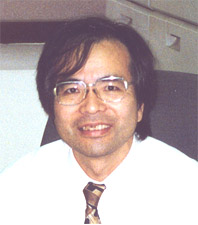Control and Synthesis of 3-D Spatial Coherence Function of Optical Fields with Applications to Photonic Sensing and Metrology
Professor Mitsuo TAKEDA
takeda@ice.uec.ac.jp


We are developing a new technique of OCT and profilometry that is based on spatial coherence, rather than temporal coherence. Instead of a point source with a broad spectrum, an extended source with a narrow spectrum is used in our technique. We synthesize a desired longitudinal coherence function by controlling the spatial structure of an extended quasi-monochromatic spatially incoherent light source with SLM (spatial light modulator). In our scheme, the optical frequency comb is replaced with a spatial frequency chirped comb generated by a zone-plate-like source. Besides solving the dispersion problem, the technique opens up a new possibility of OCT through an extremely narrow spectral absorption window, and enables a fast longitudinal coherence scan and phase shift with SLM without mechanical moving components.